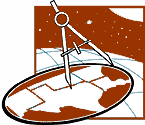|

Science and Technology
Developing Student Abilities and
Understanding Grades 5-8
In the middle school years, students' work with scientific investigations can be
complemented by activities in which the purpose is to meet a human need, solve a
human problem, or develop a product rather than to explore ideas about the
natural world. The tasks chosen should involve the use of science concepts
already familiar to students or should motivate them to learn new concepts needed
to use or understand the technology. Students should also, through the experience
of trying to meet a need in the best possible way, begin to appreciate that
technological design and problem solving involve many other factors besides the
scientific issues.
Suitable design tasks for students at these grades should be
well-defined, so that the purposes of the tasks are not confusing. Tasks should
be based on contexts that are immediately familiar in the homes, school, and
community of the students. The activities should be straightforward with only a
few well-defined ways to solve the problems involved. The criteria for success
and the constraints for design should be limited. Only one or two science ideas
should be involved in any particular task. Any construction involved should be
readily accomplished by the students and should not involve lengthy learning of
new physical skills or time-consuming preparation and assembly operations.
Note that while the principles of design for grades 5-8 do not change from grades K-4,
the complexity of the problems addressed and the extended ways the principles are
applied do change.
Developing Student Abilities and Understanding Grades 9-12
Although these are science education standards, the relationship between science
and technology is so close that any presentation of science without developing an
understanding of technology would portray an inaccurate picture of science.
Learning experiences associated with this standard should include examples of
technological achievement in which science has played a part and examples where
technological advances contributed directly to scientific progress. With regard
to the connection between science and technology, students as well as many adults
and teachers of science indicate a belief that science influences technology.
This belief is captured by the common and only partially accurate definition
"technology is applied science." Few students understand that technology
influences science. Unraveling these misconceptions of science and technology and
developing accurate concepts of the role, place, limits, possibilities, and
relationships of science and technology is the challenge of this standard.
The
choice of design tasks and related learning activities is an important and
difficult part of addressing this standard. In choosing technological learning
activities, teachers of science will have to bear in mind some important issues.
For example, whether to involve students in a full or partial design problem, or
whether to engage them in meeting a need through technology or in studying the
technological work of others. Another issue is how to select a task that brings
out the various ways in which science and technology interact, providing a basis
for reflection on the nature of technology while learning the science concepts
involved.
In grades 9 - 12, design tasks should explore a range of contexts
including both those immediately familiar in the homes, school, and community of
the students and those from wider regional, national, or global contexts.
Successful completion of design problems requires that the students meet criteria
while addressing conflicting constraints.
Over the high school years, the tasks
should cover a range of needs, of materials, and of different aspects of science.
For example, a suitable design problem could include assembling electronic
components to control a sequence of operations or analyzing the features of
different athletic shoes to see the criteria and constraints imposed by the
sport, human anatomy, and materials. Some tasks should involve science ideas
drawn from more than one field of science. These can be complex, for example, a
machine that incorporates both mechanical and electrical control systems.
Although some experiences in science and technology will emphasize solving
problems and meeting needs by focusing on products, experience also should
include problems about system design, cost, risk, benefit, and very importantly,
tradeoffs.
The above excerpts are reprinted with permission from the National
Science Education Standards. Copyright 1996 by the National Academy of
Sciences. Courtesy of the National Academy Press, Washington, D.C.
Classroom Compass Back Issues:
Issue 2.3 Contents:
Previous:
Next
|